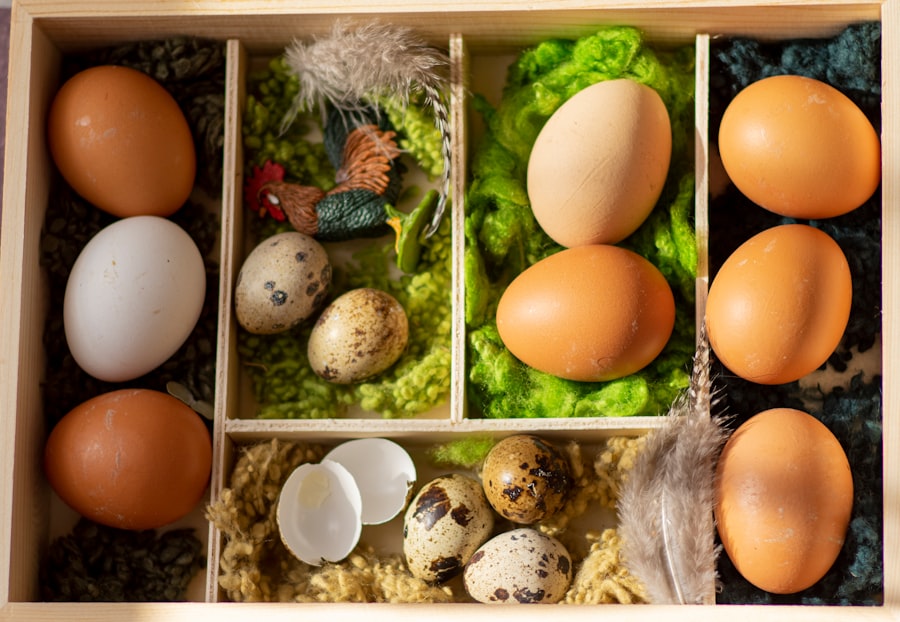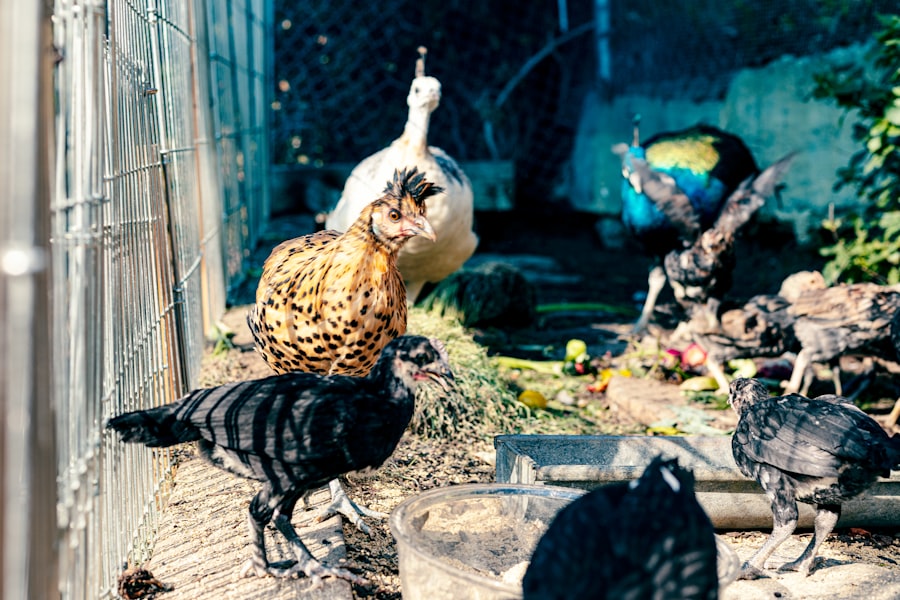Chickens require specific space allocations for optimal health and welfare. Grazing space is particularly crucial for these birds, as they are natural foragers that thrive on outdoor activity. Chickens instinctively peck at the ground, consuming grass, insects, and other natural elements.
Sufficient grazing area allows chickens to exhibit natural behaviors and maintain good health. Inadequate space can lead to stress, aggression, and various health problems in chickens. Understanding and providing appropriate space is essential for both commercial chicken farmers and those keeping chickens as pets.
The space requirements for chickens include room to move freely, stretch their wings, dust bathe, and forage. The specific amount of grazing space needed varies based on factors such as chicken breed, age, and the purpose for which they are raised. Larger breeds typically require more space than smaller ones.
While younger chickens may initially need less space, their requirements increase as they grow. Whether chickens are raised for egg production, meat, or as companion animals, providing sufficient grazing area is fundamental to their overall well-being and productivity.
Table of Contents
- 1 Factors to Consider When Determining Space for Chickens
- 2 Calculating the Amount of Space Required for Grazing Chickens
- 3 Tips for Maximizing Grazing Space for Chickens
- 4 Importance of Providing Adequate Space for Grazing Chickens
- 5 Potential Issues of Inadequate Grazing Space for Chickens
- 6 Ensuring Adequate Grazing Space for Healthy, Happy Chickens
- 7 FAQs
- 7.1 How much space do chickens need to keep grass?
- 7.2 Why is space important for chickens to keep grass?
- 7.3 What happens if chickens do not have enough space to keep grass?
- 7.4 How can I provide enough space for chickens to keep grass?
- 7.5 Are there any benefits to allowing chickens to keep grass?
Key Takeaways
- Chickens need adequate space to exhibit natural behaviors and maintain good health
- Factors to consider when determining space for chickens include breed, age, and purpose (meat or egg production)
- Calculating grazing space for chickens involves considering the number of birds, the size of the grazing area, and the duration of grazing
- Maximizing grazing space for chickens can be achieved through rotational grazing and providing diverse vegetation
- Providing adequate grazing space for chickens is important for their physical and mental well-being, as well as for optimal egg and meat production
Factors to Consider When Determining Space for Chickens
Breed and Size of Chickens
The breed of chicken plays a significant role in determining space needs. Larger breeds, such as Orpingtons or Brahmas, require more space compared to smaller breeds like bantams.
Age of Chickens
The age of the chickens is another important factor to consider. Younger chickens may require less space initially, but as they grow and mature, their space needs will increase. It’s essential to plan for the long-term space requirements of the chickens to ensure they have enough room to graze and move around comfortably.
Purpose and Environment
The purpose for which the chickens are being raised also impacts space requirements. Chickens raised for commercial egg production or meat will require more space compared to those raised as pets or for hobby farming. Additionally, the environment in which the chickens are raised should be taken into account, including factors such as climate, terrain, and access to natural elements like grass and bugs.
Calculating the Amount of Space Required for Grazing Chickens

Calculating the amount of space required for grazing chickens involves considering the number of birds, their breed, and their intended purpose. As a general guideline, it’s recommended to provide a minimum of 25 square feet of outdoor space per chicken for grazing. This allows the chickens to move around freely, engage in natural behaviors, and access fresh grass and insects.
However, this number can vary depending on the factors mentioned earlier. To calculate the amount of space needed for a specific number of chickens, simply multiply the number of birds by the recommended square footage per chicken. For example, if you have 10 chickens, you would need a minimum of 250 square feet of outdoor grazing space.
Keep in mind that this is a minimum requirement and providing more space is always beneficial for the chickens’ well-being. Additionally, rotational grazing can be implemented to maximize the use of outdoor space and ensure that the chickens have access to fresh grass and insects.
Tips for Maximizing Grazing Space for Chickens
Maximizing grazing space for chickens involves thoughtful planning and management of outdoor areas. One effective strategy is rotational grazing, which involves dividing the grazing area into sections and rotating the chickens between them. This allows the grass to regrow in previously grazed areas while giving the chickens access to fresh grass and insects in other sections.
Rotational grazing not only maximizes the use of outdoor space but also promotes healthier grass growth and reduces the risk of parasites and disease. Another tip for maximizing grazing space is to provide enrichment activities for the chickens. This can include hanging treats or toys in different areas of the grazing space to encourage the chickens to explore and move around.
Enrichment activities not only keep the chickens mentally stimulated but also encourage them to spread out and utilize the entire grazing area. Additionally, providing access to natural elements such as logs, bushes, and shrubs can create diverse environments for the chickens to explore and graze in.
Importance of Providing Adequate Space for Grazing Chickens
Providing adequate space for grazing chickens is crucial for their physical and mental well-being. Chickens are natural foragers and enjoy spending time outdoors, pecking at the ground and grazing on grass and insects. Without enough space to exhibit these natural behaviors, chickens can become stressed and frustrated, leading to aggressive behavior and health issues.
Adequate grazing space allows chickens to engage in natural behaviors, get exercise, and access fresh grass and insects, which are essential components of a balanced diet. In addition to physical health benefits, providing adequate grazing space also has mental and emotional benefits for chickens. Access to outdoor areas allows chickens to explore their environment, exhibit natural behaviors, and experience a sense of freedom.
This can reduce stress and boredom, leading to happier and more contented chickens. Ultimately, providing adequate grazing space is not only important for the physical health of chickens but also contributes to their overall well-being and quality of life.
Potential Issues of Inadequate Grazing Space for Chickens

Overcrowding and Stress
When there is not enough outdoor space for the number of chickens being raised, overcrowding can occur, leading to stress, aggression, and an increased risk of disease transmission among the birds.
Environmental Degradation
Inadequate grazing space can also result in soil erosion and degradation of grassy areas due to overgrazing. This can have long-term effects on the environment and the sustainability of the farm.
Behavioral and Nutritional Issues
Chickens that do not have enough space for grazing may exhibit abnormal behaviors such as feather pecking and cannibalism, which can be a result of stress and frustration from being confined to limited outdoor areas. Furthermore, inadequate grazing space can lead to nutritional deficiencies if chickens are unable to access fresh grass and insects that are essential components of their diet.
Ensuring Adequate Grazing Space for Healthy, Happy Chickens
In conclusion, understanding the space needs of grazing chickens is essential for anyone raising these birds. Factors such as breed, age, purpose, and environment should be considered when determining the amount of outdoor space required for chickens to graze. Providing adequate grazing space is crucial for promoting natural behaviors, physical health, mental well-being, and overall quality of life for chickens.
Maximizing grazing space through rotational grazing and enrichment activities can further enhance the well-being of grazing chickens. It’s important to recognize the potential issues that can arise from inadequate grazing space and take proactive measures to ensure that chickens have enough room to move around freely and access fresh grass and insects. By prioritizing adequate outdoor space for grazing, chicken owners can contribute to healthier, happier birds with improved welfare overall.
If you’re considering keeping chickens, it’s important to think about the amount of space they need to graze. According to a helpful article on Poultry Wizard, “What Kind of Coop is Best for Chickens,” the amount of space needed for grazing will depend on the number of chickens you have and the size of your yard. It’s important to provide enough space for your chickens to roam and forage for food, as this can have a significant impact on their health and well-being. For more information on what vegetables quails eat, check out this article.
FAQs
How much space do chickens need to keep grass?
Chickens need at least 25 square feet of space per bird to keep grass. This allows them to forage and graze without overgrazing the area.
Why is space important for chickens to keep grass?
Adequate space is important for chickens to keep grass because it allows them to forage and graze in a natural and healthy manner. Overcrowding can lead to overgrazing and damage to the grass.
What happens if chickens do not have enough space to keep grass?
If chickens do not have enough space to keep grass, they may overgraze the area, leading to bare patches of soil and a lack of forage. This can impact the health and well-being of the chickens and the quality of the grass.
How can I provide enough space for chickens to keep grass?
To provide enough space for chickens to keep grass, ensure that each bird has at least 25 square feet of space. This can be achieved by allowing them access to a large outdoor area or by rotating them through different grazing areas.
Are there any benefits to allowing chickens to keep grass?
Allowing chickens to keep grass has several benefits, including providing them with a natural and varied diet, reducing the need for supplemental feed, and improving the health of the grass and soil.
Meet Walter, the feathered-friend fanatic of Florida! Nestled in the sunshine state, Walter struts through life with his feathered companions, clucking his way to happiness. With a coop that’s fancier than a five-star hotel, he’s the Don Juan of the chicken world. When he’s not teaching his hens to do the cha-cha, you’ll find him in a heated debate with his prized rooster, Sir Clucks-a-Lot. Walter’s poultry passion is no yolk; he’s the sunny-side-up guy you never knew you needed in your flock of friends!







